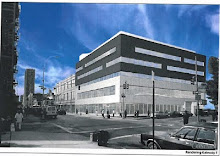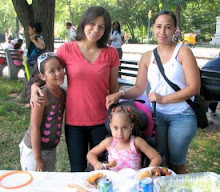When it comes to education for children with disabilities, there's no "one size fits all." Parents need to look along a continuum of programs provided by the New York City Department of Education to see which ones fit the individual needs of their child best. Once the appropriate program has been selected parents must monitor their child's progress so that if they need to they can transfer him or her to one that ensures educational benefit. That way their child is not locked in an inappropriate setting throughout their years in school.
Which program is right for your child is guided by the least restrictive environment mandate which requires that students be educated with typically developing peers to the maximum extent appropriate. This is important because, as our U.S. Congress discovered, education is more effective when the learning environment has higher expectations of its students.
The programs below are described generally and may be different in your school. The continuum of services listed here are from less restrictive to more restrictive.
From Least to More Restrictive
General Education with SETTS: the student is generally enrolled in their zoned school and attends a general education class. A special education teacher or SETTS provider generally pulls out a student in a small group. The group can be as many as 8 students who share similar academic needs. SETTS services may also be given in the classroom as well.
Collaborative Team Teaching (or Integrated Co-Teaching): is classroom taught by two classroom teachers, one special education and one general education. Students with IEPs are integrated into a classroom of non-disabled students and taught a curriculum that is at grade level. The number of students with IEPs should be less than half the classroom.
12:1 program in a community school: this is a small class, 12 students, in a community school, typically the students have a learning disability and are without disruptive behavior. There may be as many as many as three grade levels in a classroom. Many schools do not have this program and so accepting this program may mean a change of schools. Community schools should be located close to the family's home. This program is offered only in elementary and middle schools.
12:1:1 program in a community school: This class differs from the 12:1 program in that students require the additional supervision of a classroom paraprofessional. The disability of the students is more varied but academically the students must be functioning within 3 grade levels of one another.
15:1 program in a community school: This is a program similar to the 12:1 program but for high school students.
Specialized School or District 75 programs are city-wide programs that services students with disabilities whose needs cannot be met in a community school. Students may reside anywhere within the City but usually live within the same borough. The programs are 12:1:1, 8:1:1, 6:1:1 and 12:1:4, with smaller classroom servicing students with more educational needs. Most of the programs are for students with developmental disabilities, although there are also programs for students with difficult behavioral management needs. The 6:1:1 programs normally serve students with autism and the 12:1:4 serve students with multiple disabilities.
Programs considered more restrictive are approved non-public schools, day treatment programs, residential placements, and home or hospital instruction.
Here's more information about these and other special education services.
(photo: http://www.sxc.hu/profile/cienpies)
Subscribe to:
Post Comments (Atom)












No comments:
Post a Comment